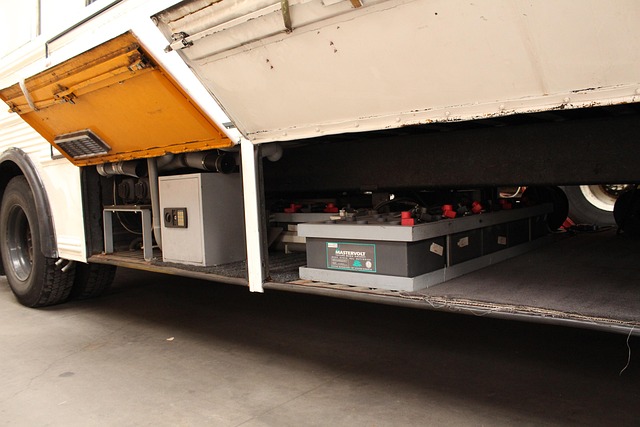Looking to register your car in California? This comprehensive guide breaks down the process step-by-step, from understanding key requirements to securing your license plate. Discover the essential documents needed, the importance of accurately verifying your Vehicle Identification Number (VIN) using a reliable VIN verifier, and whether to go online or visit a DMV office. Simplify the process and hit the road legally!
- Understand California Vehicle Registration Requirements
- Gather Necessary Documents for Car Registration
- Verify Vehicle Identification Number (VIN) Accurately
- Complete Online or In-Person Registration Process
- Pay Registration Fees and Obtain Your License Plate
Understand California Vehicle Registration Requirements

Before registering your vehicle in California, it’s crucial to understand the state’s specific requirements. The process involves several key steps and documents, ensuring your car meets safety and environmental standards. One essential aspect is having a valid Vehicle Identification Number (VIN) verifier, which can be obtained through various official channels or even through mobile vin inspection services.
California requires a comprehensive set of documents, including proof of ownership, a completed registration application, and the appropriate fees. Additionally, you’ll need to pass an emissions test, depending on your vehicle’s age and type. Mobile vin verification services can assist in this process by providing convenient and accurate VIN checks, ensuring you have all the necessary information for a smooth registration experience.
Gather Necessary Documents for Car Registration

Before diving into the registration process, ensure you have all the required documents ready. This typically includes your vehicle’s Registration Application (form DVF 180), which can be obtained from the California Department of Motor Vehicles (DMV). Additionally, you’ll need proof of identification, such as a valid driver’s license or state-issued ID card, and proof of insurance. The Vehicle Identification Number (VIN) is another crucial piece; this unique code can be found on the vehicle’s certificate of title or on the dashboard near the window. For convenience, many individuals opt for a mobile VIN verifier to quickly and easily obtain this information.
Don’t forget that the DMV requires a complete and accurate vin inspection to process your registration. This includes verifying the vehicle’s make, model, year, and other details. Some businesses offer mobile vin verification services, allowing you to complete this step from the comfort of your home or even while you’re on the go. Having all these documents prepared will ensure a smoother car registration experience in California.
Verify Vehicle Identification Number (VIN) Accurately

Before registering your car in California, it’s crucial to ensure your Vehicle Identification Number (VIN) is accurate and verified. This unique 17-character code is a key component of identifying your vehicle and is essential for completing the registration process smoothly. A simple yet critical step is to perform a VIN inspection to confirm its authenticity and ensure there are no discrepancies.
Consider utilizing mobile VIN verification services, which offer convenient and efficient solutions. These services allow you to check your VIN with the help of a specialist who can conduct a thorough inspection remotely. This modern approach, especially useful for those with busy schedules or limited mobility, ensures that your car’s registration is based on reliable data, preventing any potential delays or issues in the future.
Complete Online or In-Person Registration Process

In California, registering your car involves either a fully online or in-person process, both designed to be convenient and accessible. The first step for either method is to ensure your vehicle meets all legal requirements, including emissions standards and safety checks. Once your car passes inspection, you can initiate the registration through the Department of Motor Vehicles (DMV) website or visit a local DMV office. Online registration requires inputting your Vehicle Identification Number (VIN) using a reliable VIN verifier, whether it’s through the official DMV tools or a mobile vin verifier app for a quick and accurate vin inspection.
For an in-person approach, you’ll need to gather essential documents including your driver’s license, proof of insurance, and payment for registration fees. At the DMV, a representative will help you complete the registration forms and process your application using the provided VIN inspection tools. Both methods streamline ownership transfer, ensuring your car is legally registered with accurate information, reflecting its current condition.
Pay Registration Fees and Obtain Your License Plate

After ensuring your vehicle meets all requirements and completing the necessary paperwork, it’s time to pay the registration fees. California charges a base fee for registration, with additional costs based on your vehicle’s type and emissions status. You can pay online or at a local DMV office. Once your payment is processed, you’ll receive your Registration Certificate, which confirms your car’s legal status in the state.
To obtain your license plate, you must schedule a time to pick them up from a DMV office or, for added convenience, opt for a mobile vin inspection service that can issue plates on-site. These services use a vin verifier to confirm your vehicle’s identity and history, ensuring everything is in order before issuing your plates. With your new license plates in hand, you’ll be ready to hit the road legally.
Registering a car in California involves understanding specific requirements, gathering essential documents, and accurately verifying the Vehicle Identification Number (VIN) using reliable VIN verifier tools. You can complete the process online or in-person, ensuring you meet all legal obligations. Once registered, pay the required fees and obtain your license plate to legally operate your vehicle in the Golden State.
